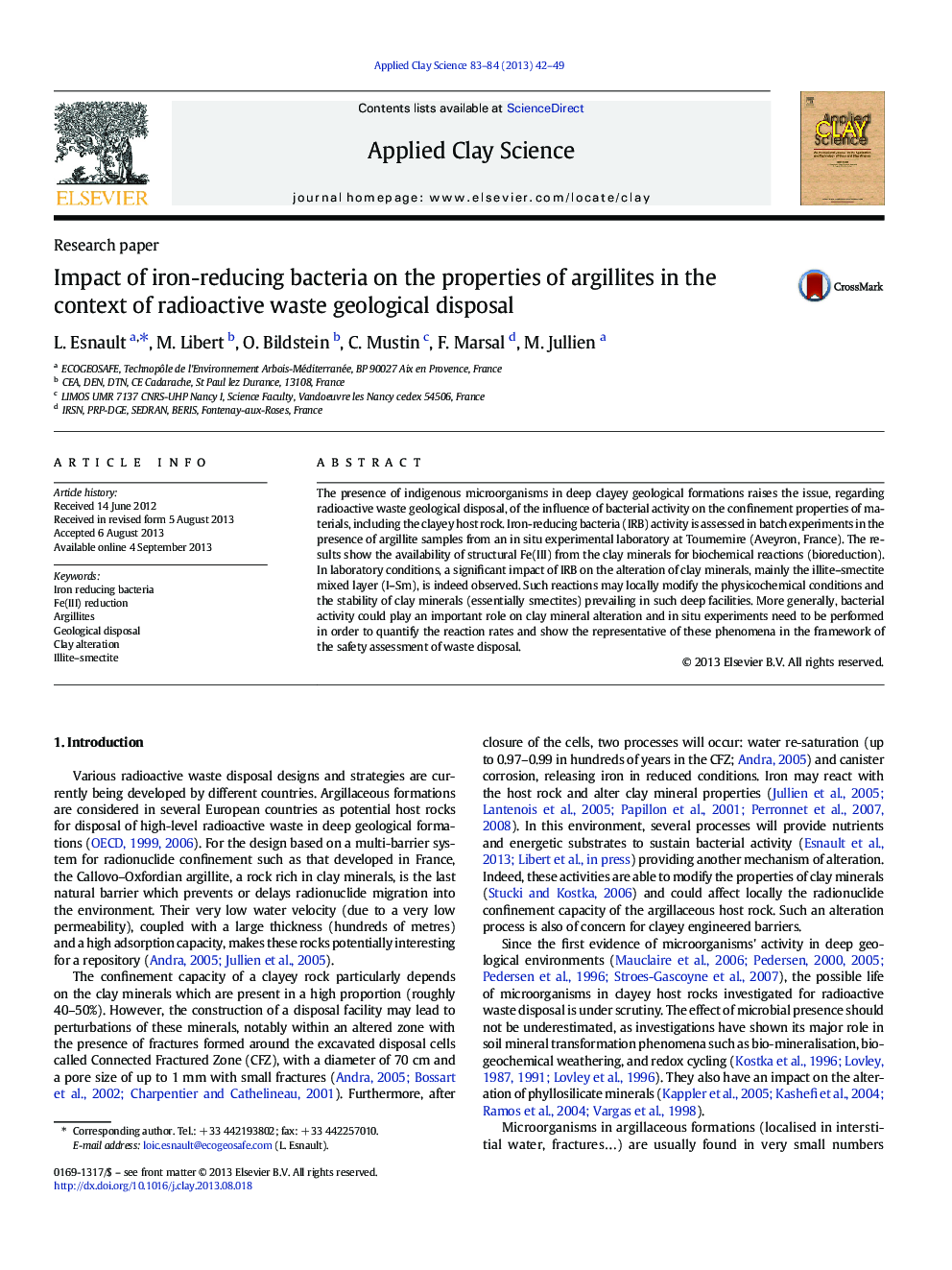| Article ID | Journal | Published Year | Pages | File Type |
|---|---|---|---|---|
| 1694863 | Applied Clay Science | 2013 | 8 Pages |
•Influence of bacterial activity on the confinement properties of argillite is studied.•Results show the availability of clay structural Fe(III) for bioreduction reactions.•Alteration of clayey minerals, mainly the illite/smectite mixed layer is observed.•Bacterial activity has to be evaluated in safety assessment studies of waste disposal.
The presence of indigenous microorganisms in deep clayey geological formations raises the issue, regarding radioactive waste geological disposal, of the influence of bacterial activity on the confinement properties of materials, including the clayey host rock. Iron-reducing bacteria (IRB) activity is assessed in batch experiments in the presence of argillite samples from an in situ experimental laboratory at Tournemire (Aveyron, France). The results show the availability of structural Fe(III) from the clay minerals for biochemical reactions (bioreduction). In laboratory conditions, a significant impact of IRB on the alteration of clay minerals, mainly the illite–smectite mixed layer (I–Sm), is indeed observed. Such reactions may locally modify the physicochemical conditions and the stability of clay minerals (essentially smectites) prevailing in such deep facilities. More generally, bacterial activity could play an important role on clay mineral alteration and in situ experiments need to be performed in order to quantify the reaction rates and show the representative of these phenomena in the framework of the safety assessment of waste disposal.
